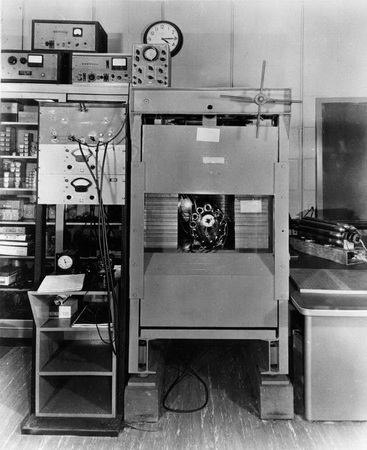Question #010e1
1 Answer
Libby used beta-detectors to count the amount of beta radiation emitted by decaying carbon-14 atoms in a sample.
Explanation:
No one can speed up the process of nuclear decay.
To measure the weak radiation from carbon samples, he surrounded his sample chamber with thick metal shields and many Geiger counters that were calibrated to detect and eliminate background radiation.

(From American Chemical Society)
You can see the circular arrangement of Geiger counters in the centre and the thick metal shields on all sides.
Once Libby had removed the background radiation, he could count the frequency of clicks from the sample over a long period.
He could use the decreased frequency of clicks to measure the rate of decay of carbon-14 samples and estimate the half-life at 5568 years.
He could then use the integrated first order rate law to calculate the number of clicks per second that he should expect after any given number of years.
If an old sample of carbon gave half as many clicks per second as a fresh sample, he knew that it was one half-life (about 5600 years) old.
He tested this value by measuring decay rates (clicks per second) of carbon from samples of known age.

These numbers he obtained from carbon samples of known age matched those obtained from his half-life calculations.
The age of carbon-14 dating was born!

